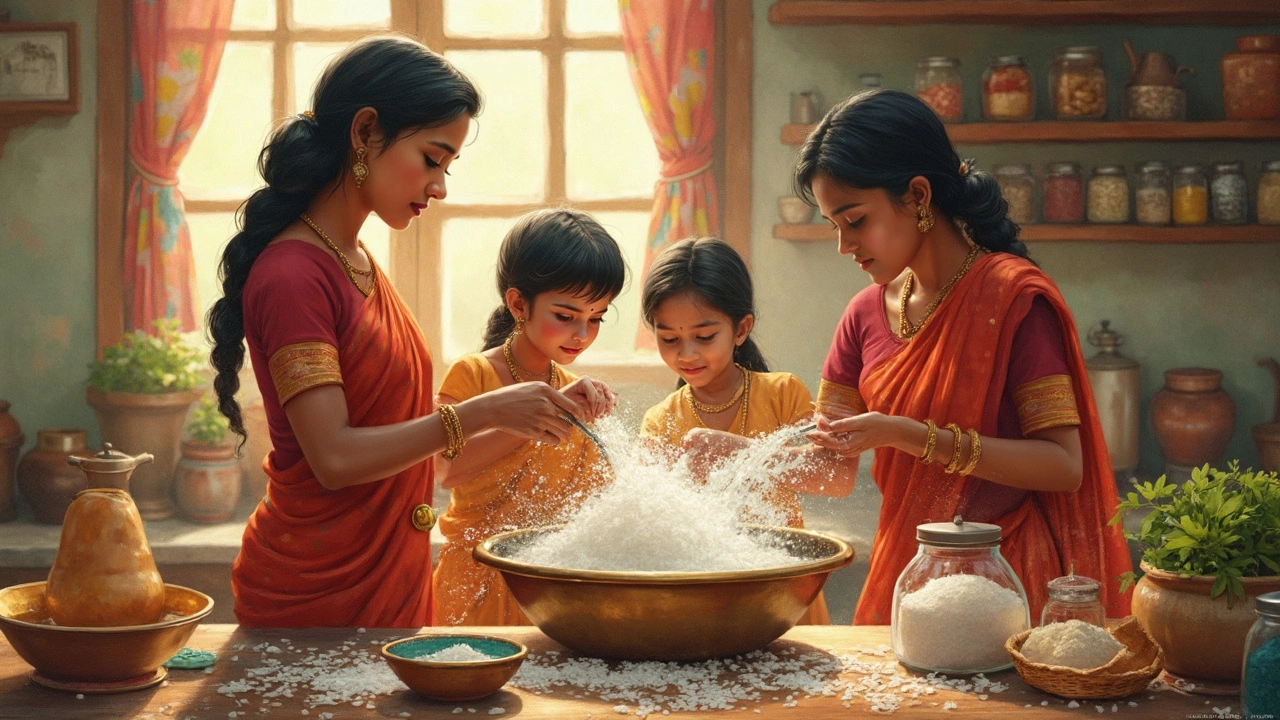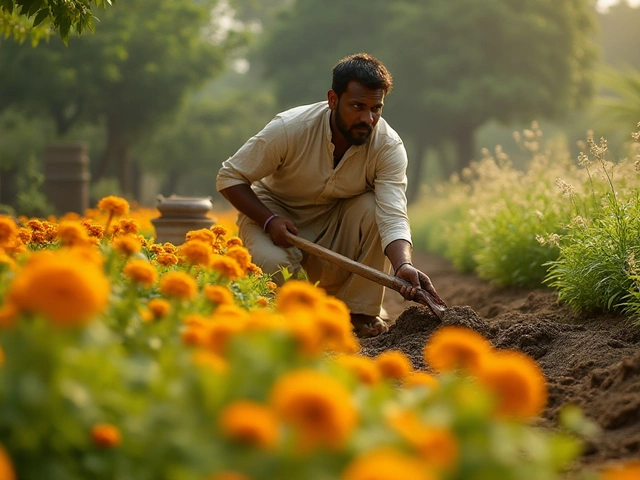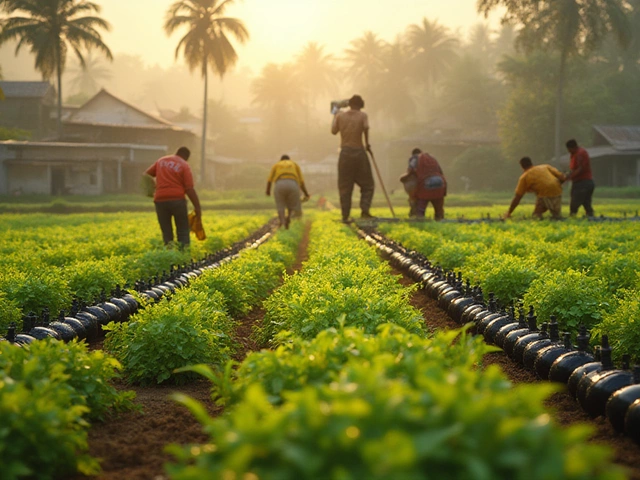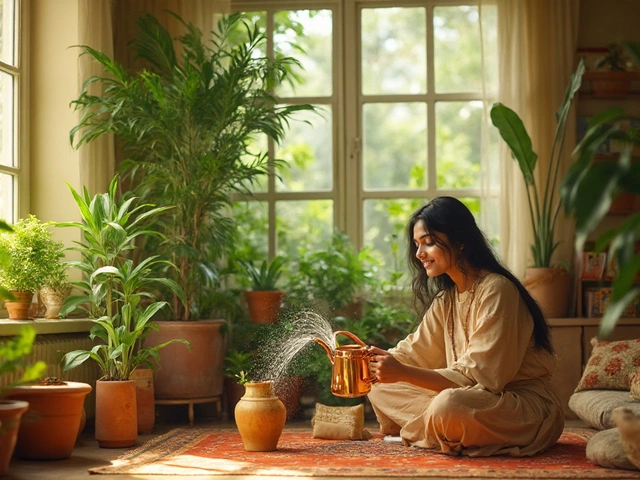Ever poured rice into a pot and watched the water turn cloudy? That murky stuff isn't just harmless dust—it's a mix of starch, bits of husk, maybe even some pesticides left over from the rice fields. Washing rice isn't just for the folks obsessed with cooking shows. It's a basic move that can change how your rice tastes, smells, and sticks together—or doesn't.
Let's get practical. If you've noticed your rice comes out clumpy or gummy, chances are you're not rinsing off enough surface starch. On the other hand, skip washing and you might get a weird earthy flavor or even extra chemicals leftover from the processing plant. It's not just about looks; it can affect what goes into your body and how your final meal turns out.
Whether you just want a perfect bowl or you're worried about what might be lingering on those grains from the farm to the store, understanding why washing matters makes a huge difference. And yeah, it's easy to get it wrong—wash too much and you lose important nutrients, skip it and you risk muddy rice. There's a reason every cooking culture has its own take on how to do it right.
- What's On Raw Rice Grains?
- How Washing Changes Taste and Texture
- When Washing Matters Most: Types and Sources
- Tips for Proper Washing (and When to Skip It)
What's On Raw Rice Grains?
Grab a handful of uncooked rice and take a closer look. It might seem clean, but those little grains pick up a lot on their journey from muddy fields to your kitchen. After harvesting, rice usually goes through a milling process. While this strips away the tough outer husk, tiny fragments often stick to the surface. These are called "rice bran" or just plain dust. No matter how well it's packaged, it's normal to spot some of this leftover stuff.
The other big thing you’ll find is excess starch. Milling scratches the surface, leaving a chalky film. When you pour water on rice and see that cloudy effect, it’s mostly this fine starch powder washing off. If you skip rinsing, it can make your rice turn out stickier or even gluey, especially in dishes where you want fluffy grains. Some people actually want that for recipes like sushi or risotto, but for plain steamed rice, it usually just makes a mess.
Here’s a concern a lot of folks don’t think about—chemicals. Growers sometimes use pesticides or fertilizers during the crop cycle. While most rice is cleaned before it hits store shelves, trace residues can stick around. This is especially true if the rice was grown in countries with less strict food safety rules.
You might also spot tiny stones or husk bits, especially with rice straight from the farm or from small producers. In some cases, rice grains can rub against each other in sacks and break, leaving you with extra broken pieces or powder at the bottom of the bag.
- Wash rice to remove excess starch and dust.
- Rinsing also helps get rid of possible chemical residues left over from growing or processing.
- If your rice is unpolished or hand-packed, watch for bits of husk and stones too.
Washing rice isn’t about being fussy—it’s about making sure what you eat is as clean, safe, and tasty as possible.
How Washing Changes Taste and Texture
So, does splashing rice with water actually change what you bite into later? Absolutely. The first big reason is surface starch. Rice grains are coated with fine powdery starch that comes loose during harvest and packing. If you skip washing, that starch thickens once you add heat, causing clumps or a gluey mess—especially with short-grain varieties. Give a couple of rinses, and that extra starch goes down the drain, leaving you with fluffier, separated rice grains.
But that's not all. Washing helps remove a bit of bran dust and random debris that stick around after the polishers at the factory do their thing. This dust isn’t dangerous in small amounts, but it can give your rice a strange flavor or odd odor. Some folks notice the difference right away, especially when steaming jasmine or basmati rice, which can pick up a faint earthy or musty taste if left unwashed.
Washing also affects how rice absorbs water. Once you rinse off the top layer of starch and dust, rice grains soak up water more evenly. That means less gummy mush at the bottom of the pot and fewer crunchy surprises up top. Wash rice too much, though, and you risk scrubbing off nutrients—vitamins and iron are sometimes sprayed on after milling, especially with enriched rice in the US.
| Rinsing Method | Typical Outcome |
|---|---|
| Unwashed | Sticky, clumpy rice; stronger grain odor |
| Rinsed Once | Some starch gone; mildly sticky texture |
| Rinsed 2-3 Times | Fluffier rice; clean, neutral flavor |
| Over-rinsed (>5 times) | Some loss of nutrients; minimal taste/texture gain |
The big takeaway is that a couple of quick rinses make a world of difference, especially for Asian-style dishes where each grain matters. People making risotto, on the other hand, usually skip rinsing because they want the rice to go starchy and creamy. It’s a simple step, but it totally shapes your meal’s final taste and feel.

When Washing Matters Most: Types and Sources
If you think all rice is the same, just wait until you try not washing different types. Some rice needs way more rinsing than others, so knowing where it comes from and what kind it is really helps. Let’s break it down.
First, the basics. White rice and brown rice aren’t equal. Brown rice keeps its bran layer, which means more fiber and nutrients, but it usually has less dust and starch on the surface than white rice. Still, you should rinse both, but brown rice needs less work. For white rice, especially stuff that’s mass-produced or imported, you’ll see that milky water after a single rinse—proof of leftover starch and, sometimes, stuff you’d rather not eat.
This isn’t just about home habits. After the 2015 FDA study on arsenic in rice, lots of people started rinsing more carefully, especially for rice sourced from areas with a history of contamination. According to Consumer Reports, "Rinsing white rice can lower the arsenic content by up to 30 percent, though it also rinses away some vitamins added by fortification."
Rinsing white rice can lower the arsenic content by up to 30 percent, though it also rinses away some vitamins added by fortification. — Consumer Reports, April 2023
Organic, local rice? Usually cleaner, but you can’t see pesticide residue or bacteria. Wild rice and specialty types like basmati or jasmine are less processed than standard supermarket rice, so they might carry bits of husk, weevils (gross but real), or field dust. Check the package. If it says "pre-washed," you’re set, but most rice sold worldwide isn’t washed at the factory.
Here’s a quick guide to common rice types and how much rinsing you really need:
| Type of Rice | Source | Rinsing Needed? | Reason |
|---|---|---|---|
| White (regular) | US, Asia | Yes | High surface starch and dust |
| Basmati/Jasmine | India, Thailand | Yes | Fragrant, but often dusty |
| Brown | Worldwide | Light | Less starch, more fiber |
| Pre-washed/Instant | US, EU | No | Ready to cook |
| Wild rice | US, Canada | Yes | Possible debris, field particles |
Bottom line? The most important time to rinse is when you pick up bulk rice from a bin, buy imported bags with no extra labeling, or just see that cloudy water pour out the first time. If you’re making sushi, even tiny bits of leftover starch can ruin texture—so here, washing is non-negotiable. For most other meals, a couple of rinses in a bowl until the water runs mostly clear is all it takes.
If you want to really dial in your wash rice game: use cold water, swirl gently, and repeat 2-3 times. Not rocket science, but it pays off when you’re after clean, light, and perfectly cooked grains.
Tips for Proper Washing (and When to Skip It)
Washing rice isn’t a one-size-fits-all deal. The way you wash depends on the type of rice and even what you want on your plate. Here’s how to get it right and when you can actually skip it, without stressing over every single grain.
First, know the basics. Use cold water, never hot—hot water can make rice absorb weird smells or start cooking early. Pour in water, stir the rice with your hand, then drain. You’ll want to repeat until the water runs more or less clear, usually three to five rinses works for white rice. Brown and specialty rice sometimes need less (or none at all), since they haven’t been stripped down as much during processing.
- Short-grain rice (think sushi or sticky rice): Wash well to get rid of extra starch—this keeps it from getting gummy.
- Basmati and jasmine: Washing keeps long grains fluffy and separate. Two to three rinses is enough.
- Brown rice: Has less loose starch on the outside, but still good to rinse once or twice for dust and field stuff.
- Parboiled or pre-washed rice: Usually doesn’t need rinsing. Check the label; the manufacturer will brag about it if it’s ready to cook out of the bag.
Here's a handy table that shows how washing affects different rice types:
| Rice Type | # of Rinses Needed | Main Reason |
|---|---|---|
| Short-grain (sushi, arborio) | 3–5 | Remove surface starch |
| Long-grain (jasmine, basmati) | 2–3 | Fluffier texture and less stickiness |
| Brown rice | 1–2 | Remove debris/dust |
| Pre-washed/Parboiled | 0 | Ready to cook |
You may wonder when to skip washing altogether. Packaged "ready-to-cook" rice, microwaveable packs, and extremely polished rice don’t really need rinsing—washing these types can actually mess with the texture. If the packaging says pre-washed or fortified with extra nutrients, leave it be. Rinsing will strip off added vitamins from enriched white rice. This is especially noted by the USA Rice Federation, who says,
“If rice is enriched, rinsing will wash away the added vitamins and minerals.”
One extra tip: always use a bowl or fine mesh strainer. Dumping rice directly into a sink colander can send half your grains down the drain. And remember, washing rice isn’t about perfection; it’s about getting rid of what you don’t want and keeping what you do. Just follow the table and listen to what the recipe (or packaging) tells you—your next pot of rice will be a lot better for it.





